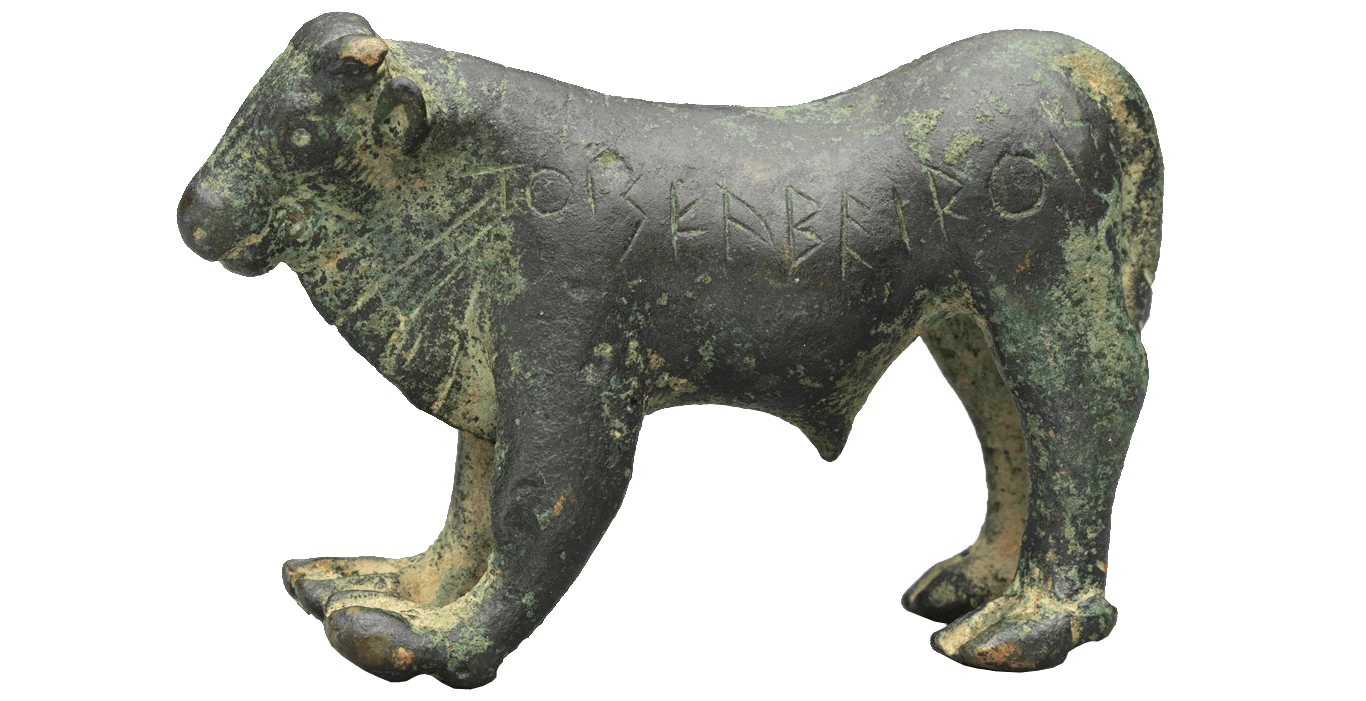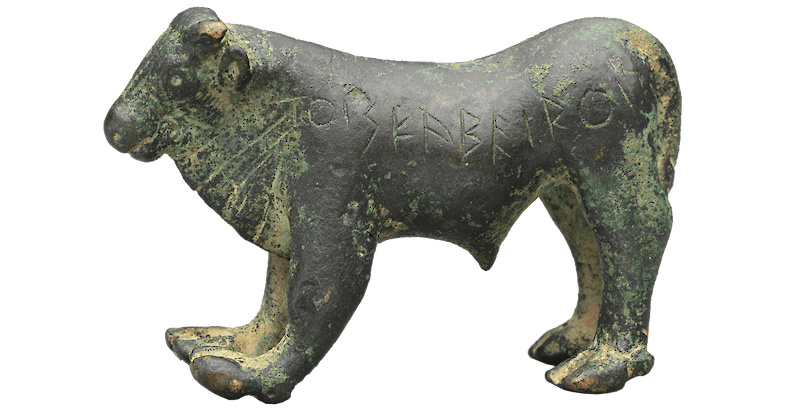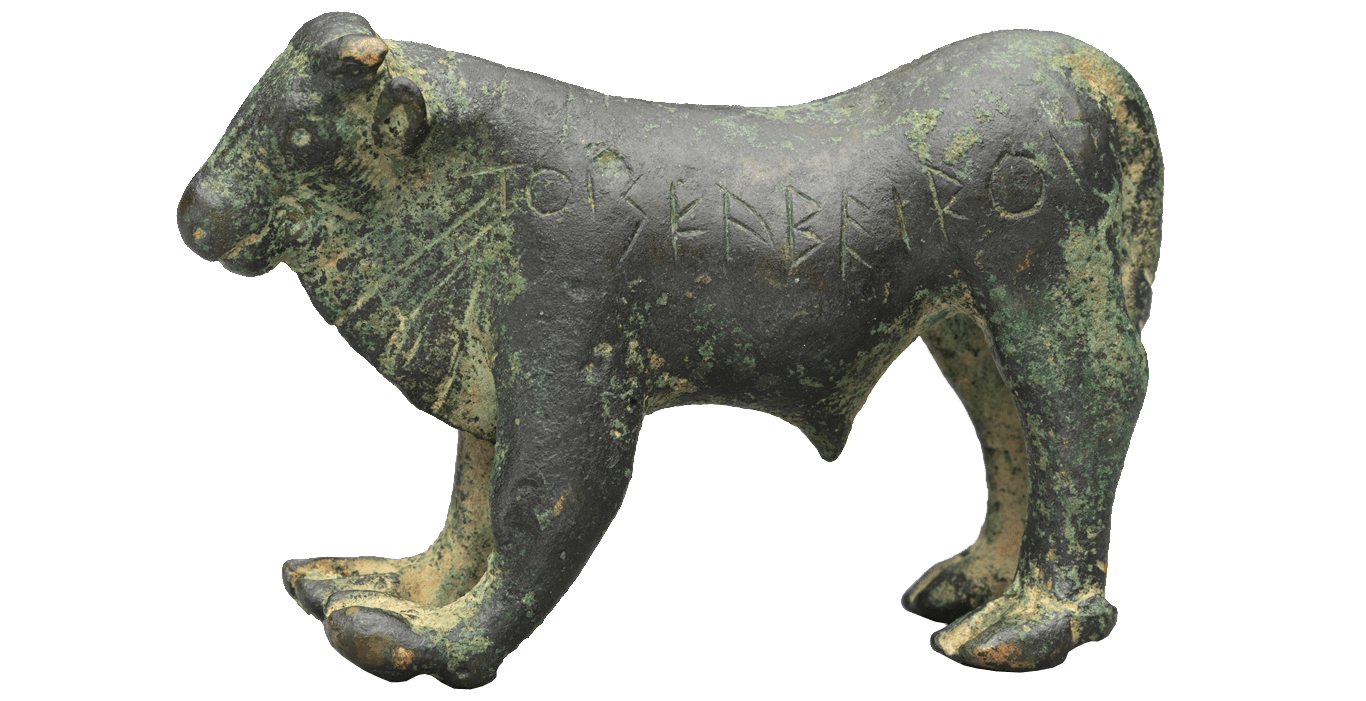


Sometimes simple objects can unlock a historical fever dream of mythological sex and weirdness—and this bronze bull is one of these magical little trinkets. The small sculpture was discovered in an archeological site an hours’ drive northwest of Athens, Greece. The site was excavated between 1888 and 1889 by the German Archaeological Institute. Now called the Kabeirion of Thebes, it includes a temple, theater, stoa or colonnade, and many circular buildings containing sacrificial pits, and benches for rows of initiates.
This bull is one of more than 1400 similar sculptures found at the site, votive offerings to the twin gods of the secretive Kabeirion cult. The deities in question were Kabeiros and Pais, dwarfish sons of the Greek god Hephaistos, who served at his forge on mount Olympus. The brothers were known as the “shield-clashing, dancing warriors of the orgies” and worshipped the goddesses Demeter, Persephone, and Hekate by throwing out-of-control sex-parties in their honor.
Our bull and its many brethren were fertility icons left by initiates of the cult. This figure carries a dedication inscription in Greek, “Thaletas dedicated me to the Kabeiroi.”
